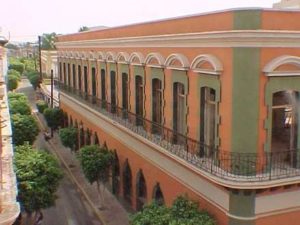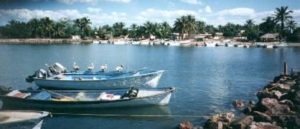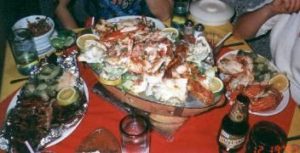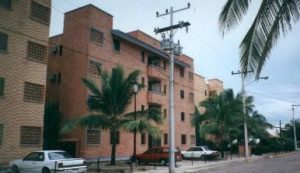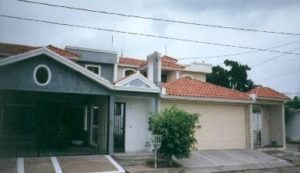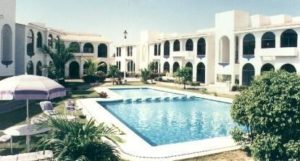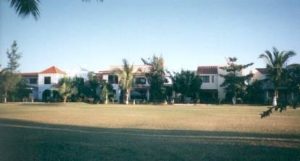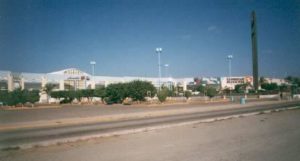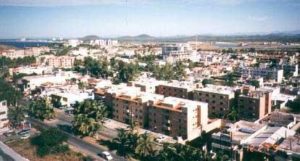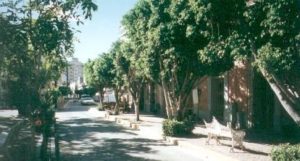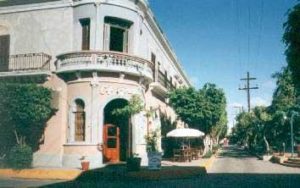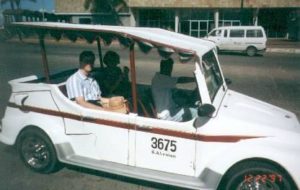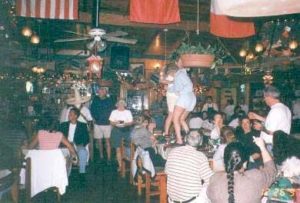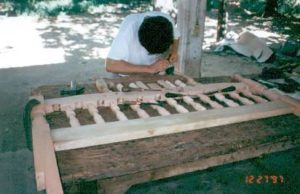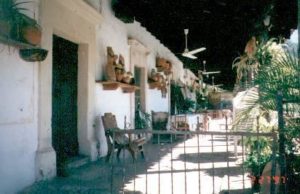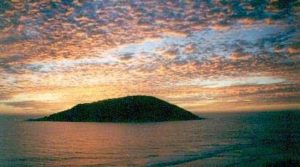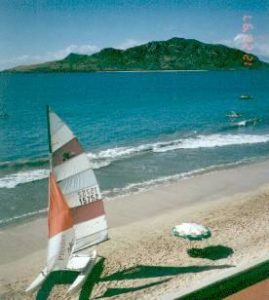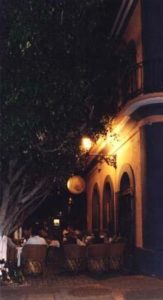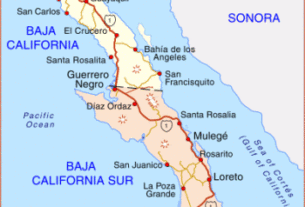Recently, a number of books, magazine articles, web sites and Internet forums have begun to include discussions among surprisingly large numbers of Americans and Canadians about the possibility of retiring in Mexico. When specific locations are discussed, a few areas seem to dominate the conversations, specifically those areas where sizable “enclaves” of North American retirees already reside, namely: Guadalajara and Lake Chapala, San Miguel de Allende, Cuernavaca, and Puerto Vallarta. Mentioned occasionally are Oaxaca, Morelia, Guanajuato, and even Mexico City.
It has always seemed strange to me that Mazatlán would be overlooked by so many as a possible retirement destination. After talking with several retirees who live there and several visits to different areas in Mexico, in addition to many wonderful vacations in Mazatlán, I have concluded that it certainly deserves more careful consideration. In my opinion, it has several advantages over other potential retirement sites further to the South.
Location and Climate
Mazatlán, (pronounced “maz-at-LAHN”, with the stress on the last syllable), means “place of the deer” in the Nahuatl (Aztec) language,. It is a city of around half a million people, located on a long, flat stretch of the Pacific coast of Mexico, just to the south of the Tropic of Cancer and due east of the tip of the Baja peninsula. It is here that the cool waters of the deep Pacific meet those of the warm, shallow Gulf of California. You might think of Mazatlán as having one foot in the tropics and the other in the dryer, dessert climate to the north.
The summer months can be hotter and more humid than residents of the western US and Canada are accustomed to, but for much of the year, Mazatlán enjoys perfect weather with milder temperatures and lower humidity when compared with Puerto Vallarta, Zihuatanejo, Acapulco, or Cancun. On many days, a refreshing breeze blows in from the Pacific in the afternoon to keep the midday heat under control. I am told by some folks who should know, that even in the middle of summer, it is generally less uncomfortable than Houston, St. Louis or Miami.
I guess they all must hide in the “winter” when we visit Mazatlán, because we have yet to meet the local insect population. While we have heard that some of our six-legged friends do appear during the summer rainy season, the kinds of insect problems that plague many other beach areas in Mexico are, for some reason, mostly absent here.
Even before it became a major tourist destination, Mazatlán was famous for its superb sport fishing. Eight fleets of charter boats haul in about 8,000 to 9,000 marlin and sailfish each year. The ocean is great for swimming and surfing too. The sunsets are fabulous and for those of us who enjoy long walks, the beaches go on and on for miles, both to the North and to the South of the city. On most days, one can find completely deserted, palm tree-lined, golden strands only a short drive or long walk from the city center.
There are also many more, interesting things to do within a short distance. The rugged peaks of the Sierra Madre Occidental are clearly visible to the east. Tropical plantations, mountain jungle and mangrove swamps for wildlife viewing, are all close by, as are a couple of idyllic colonial pueblos. In one nearby town, artisans specialize in hand-crafted furniture which they sell at very reasonable prices. Local bus service to all surrounding areas is frequent and very inexpensive. Even though you can find just about anything you need in Mazatlán, big-city shopping and conveniences in Guadalajara are also only a short day’s drive to the South.
Mazatlán is easily accessible from the western US by air and by car or bus. Among Mexican destinations, it represents one of the shortest and least expensive flights from Los Angeles, San Francisco, Phoenix, Portland, Seattle and Vancouver with daily service available from several airlines. Those preferring to drive or ride in the incredibly inexpensive and comfortable (Primera Clase) Mexican buses, will find a 4-lane freeway (Maxipista) from the border at Nogales all the way to Mazatlán. The 743 miles can be covered in one long or two easy day’s drive. There are a number of RV parks, (some right on the beach), that fill up with American and Canadian “snowbirds” every winter.
Two Different Cities for the Price of One
While Mazatlán is indeed a major tourist resort, it is not an artificial “Mega-Resort” designed by the government specifically for foreign vacationers like. Cancun, Ixtapa and Huatulco, nor does it have the large permanent expatriate colony that one finds in the Guadalajara area. The few hundred or so Canadian and American expatriates who call Mazatlán home tend to spread out and integrate to some degree with the local population.
There are a few multi-national corporate-owned chain hotels, but most of Mazatlán’s hotels are owned by local Mexican families. World class accommodations and restaurants are abundant, but a fair amount of the vacationers who visit Mazatlán are Mexican nationals from the interior cities, except during Carnaval when the whole world converges on what is said to be Latin America’s second largest Mardi Gras celebration.
Mazatlán is also a “real” Mexican city. The working part of Mazatlán, Mexico’s largest Pacific port and bustling commercial center, is separated from the resort hotel area — the Zona Dorada, or Golden Zone — by a 13 Km long beach and malecón, (ocean front promenade). “Old Mazatlán” is far enough awayfrom the tourist area, and has a large enough permanent population that it has thus far been able to escape the artificial resort atmosphere and high prices, that are so pervasive in many of Mexico’s ocean resort cities.
Here one can relax over a cool Pacifico beer, at one of the shady sidewalk cafés surrounding the lush, tropical Plaza Machado, and watch local children as they scurry around the gazebo bandstand. The discos in the tourist zone may belt out a steady beat until the small hours of the morning, but the slower pace of Old Mazatlán is only a short ride away on the incredibly inexpensive public buses or with one of the fun pulmonías or open-air taxis that are unique to this city.
Of importance to a potential foreign retiree, Mazatlán offers the conveniences of a mid-sized Mexican city with several large supermarkets, department stores, a Sam’s Club and a familiar suburban-style shopping mall, along with excellent, modern and inexpensive medical facilities. Many other amenities popular with retired Americans and Canadians are also available.
There is a new marina, two world class golf courses, tennis courts and swimming pools. There is a beautifully restored, 150-year old opera house which hosts numerous cultural events, movie theaters, a champion hometown baseball team, bull fights, an aquarium, and, of course, a gated community with a lots of other North American retirees, many of whom organize and or participate in various local, English-speaking organizations and group activities.
The mazatlecos — Mazatlán’s people — are incredibly friendly, are surprisingly courteous behind the wheel and, because of the importance of the local tourist industry, many of them speak at least some English. Of course for those who are bold enough to learn a little Spanish and merge to some degree into the local economy, Mazatlán can also be a very inexpensive and much more interesting place to live the good life.
For much of the year there is excess capacity in tourist facilities and, as previously mentioned, many of the vacationers in Mazatlán are Mexicans. These two factors help keep prices down and competition for tourist dollars and pesos fierce. Real estate prices are low compared to other resort areas, and grocery prices and other living expenses are also lower on average than in many other areas popular with North American retirees.
Housing
There is an abundance of housing for sale and/or for rent throughout Mazatlán. Prices are very low when compared to like properties in the western US or Canada. Notices for rental housing can be found on the free bulletin boards at the Soriana supermarket where many North Americans shop. Longer term rents run from a few hundred dollars per month on up.
For those looking to buy, there is an infinite variety of housing options. Near the high end, the gated El Cid housing development is home to a good sized group of expatriate Americans and Canadians as well as many wealthy Mexicans.
Most houses and condos in this neighborhood are either on the golf course or on the marina, and prices depend on size and degree of luxury. US and Canadian license tags can also be seen on many vehicles parked in neighborhoods surrounding the El Cid development. There are several English-speaking Mexican realtors and even a few knowledgeable, well-established US and Canadian real estate agents who can help a potential buyer through the infamous Mexican real estate red tape jungle.
Very comfortable houses in a nice upper-class neighborhood, within two or three blocks of the beach, with 3 bedrooms, 2 baths, double carports, and private walled patios could be found for US $50,000. to $100,000 a few years ago. Many condominiums in the same neighborhoods, as well as houses in the older part of town were available for substantially less. We have also seen ocean front condominiums in a development just north of the Marina for sale at very accessible prices.
Mazatlán Has Great Food
Mazatlán is home to the largest fishing and shrimp fleets on the west coast, and the Shrimp and other fresh seafood are not to be believed! We never thought it possible to be served too many shrimp, but when faced with a platter full (one kilo) of the biggest, sweetest, jumbo shrimp we had ever seen, two of us were able to finish it only with great difficulty. While not the bargain they were a few years ago, they are still considerably less expensive than they would be in a US restaurant.
While restaurants in the hotel zone can be somewhat pricey by Mexican standards, in the fondas, or small food stalls at the central mercado, a hot meal of fish or shrimp will cost only a few dollars, and restaurants frequented by locals offer many types of cuisine for only slightly more. Orange juice is always fresh squeezed and the melons, pineapples and papayas are sweet and luscious.
You can easily find fresh produce from small-scale local farmers that tends to be more or less organic by default because they cannot afford artificial fertilizers, pesticides, etc. Tomatoes and other fruits and vegetables are vine-ripened, fresh and flavorful. I am told that early risers can buy fish and shrimp directly from the returning fishermen on the beach near the Fishermen’s Monument. Most local meat comes from livestock who have more than likely never been exposed to commercial feed and forced-fed hormones and antibiotics.
Domestic cheeses are exceptionally flavorful and Mexican beer tastes like it should cost twice as much as Budweiser, not half as much. If your drink is whiskey, bring it with you, but if you like rum or tequila, or cold drinks made from fresh fruit, “licuados”, you’re in luck. A word of warning: the margaritas here are larger and much stronger than those served up North.
Healthcare
In addition to several US-trained, English speaking doctors, Mazatlán boasts several modern hospitals and clinics. The Sharp Hospital is widely regarded as one of the most modern and well-equipped hospitals in the country outside Mexico City. A few years back, on one of our annual winter vacations, I developed a serious case of the flu — which I was exposed to before leaving home — and ended up in the emergency room at the Sharp Hospital. The attention and care that I received was exceptional and the entire cost of my visit, including a thorough examination, injection and medication, worked out to be less than my insurance co-pay would have been at home. Now maybe you Canadians won’t find that so surprising, but anyone who has had the misfortune to end up in the ER of a typical US hospital without adequate insurance coverage, will recognize the incredible bargain here.
It is my understanding that Medicare coverage does not extend outside the US at this time, but the out-of-pocket costs for Mexican health insurance, prescription medications, live-in nursing arrangements and dental care are all substantially less than in the US.
Learning Spanish and Dealing with Immigration Red Tape
I have met Americans and Canadians living in Mazatlán who get along just fine with little or no Spanish at their disposal. Still, learning some Spanish is not only useful, it can greatly increase an expatriate’s sense of belonging and their enjoyment of their new home. There are several language schools in Mazatlán where you can learn Spanish at your own comfortable pace.
In Conclusion
All things considered, I think Mazatlán is a great place for Americans and Canadians to visit or to retire. Canadians may be interested to hear that, after the Mexican nationals, the next most abundant group of vacationers, in winter anyway, seem to hail from Western Canada. The word on Mazatlán has apparently been out for some time in Vancouver!
For More Information
If you would like to get “plugged into” a group of people, both Gringos and Mazatlecos, who know a lot about Mazatlán, I recommend tuning into the MazInfo discussion group which you can join at https://www.mazinfo.com/ Most of the participants on this forum actually live in Mazatlán, at least part-time, and are very helpful and friendly. There is always someone there who is happy to answer specific questions.
While not specifically about Mazatlán, far and away the best book for foreigners who want to get to know Mexico, Mexicans, and “things Mexican” is The Peoples Guide to Mexico by Carl Franz and Lorena Havens. The whole book is packed full of information that is useful for people who are considering living or just traveling in Mexico and is available at any well-stocked bookstore. In addition to the book, they also have a newsletter that they publish periodically, the People’s Guide Travel Letter.
Mazatlán’s English language newspaper, The Pacific Pearl covers the tourist and expatriate beats.
Below are some more links that you may find useful:
- Outside Mazatlán – the Real Sierra Madre
- Mazatlan: Why snowbirds keep coming back
- Mazatlan: Tequila, tans and working stiffs
¡Buena suerte y nos vemos en Mazatlán!

